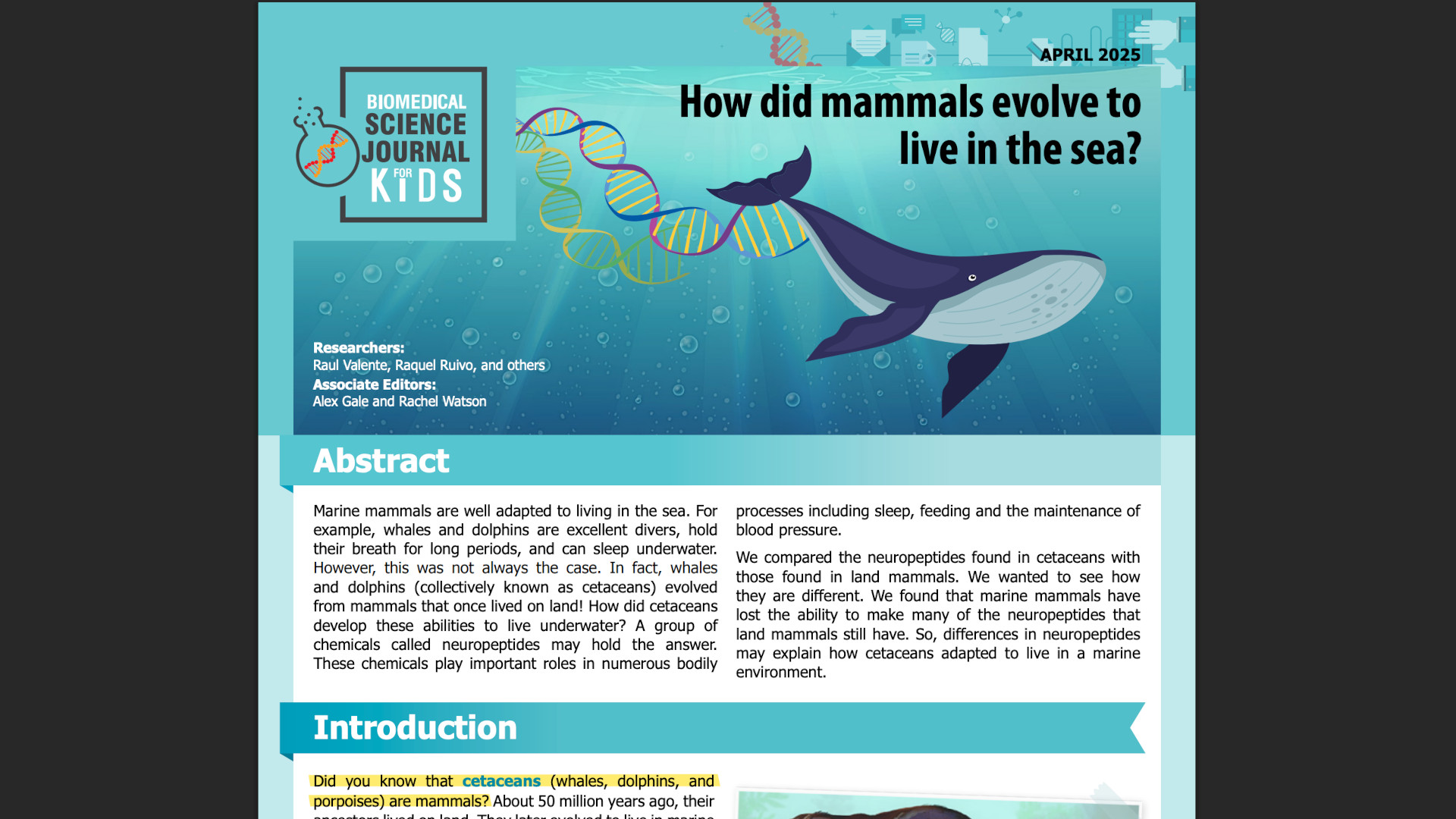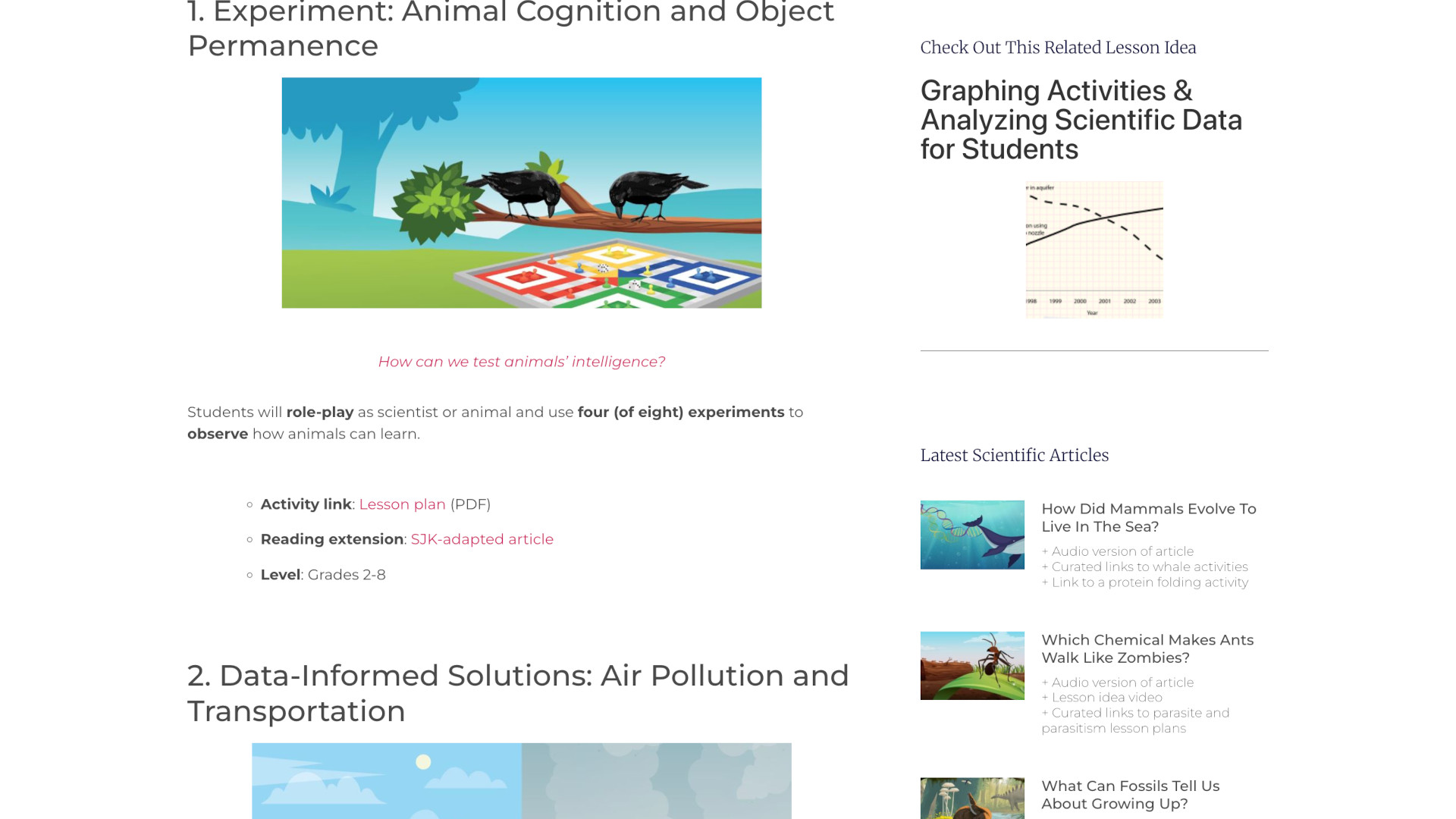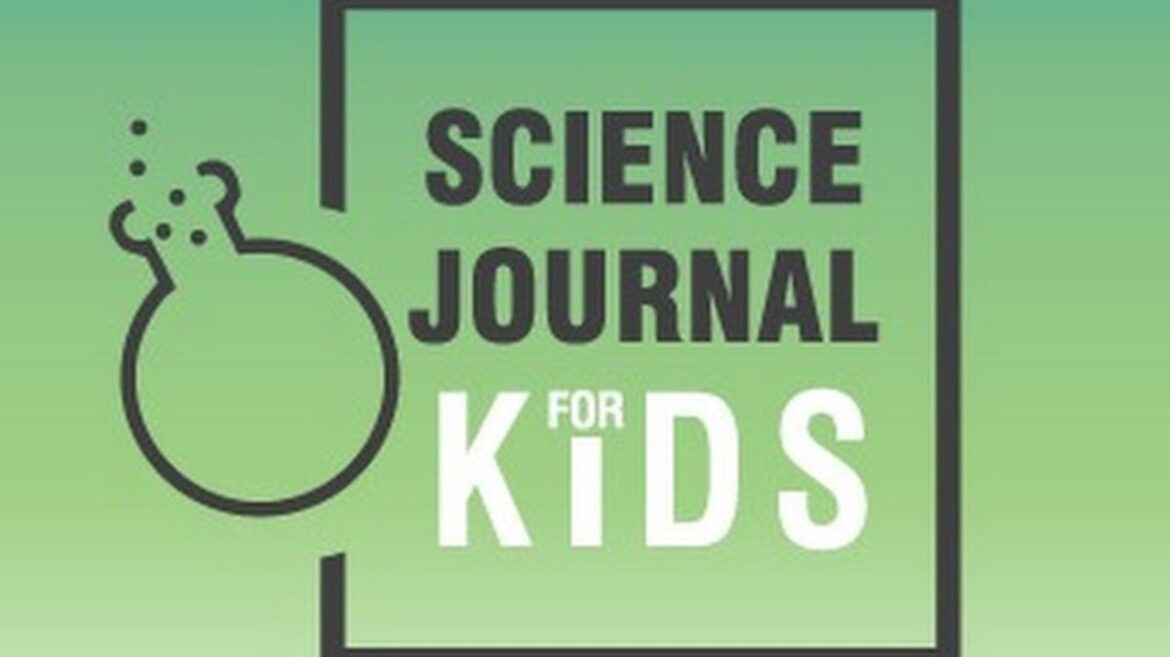Science Journal for Kids is an online resource created by teachers for teachers and students.
The full name is now actually Science Journal for Kids and Teens, so this now expands beyond the basics to more challenging scientific materials.
The site founder, Tanya Dimitrova, was an elementary science teacher and environmental science reporter before developing this STEM resource project. Now the team has grown and the offering is expansive.
The result is an online science magazine for kids with peer-reviewed research, written in age-appropriate language.
This guide aims to explain all you need to know to see if Science Journal for Kids and Teens could work for your class.

What is Science Journal for Kids?

Science Journal for Kids is an online science magazine for kids and their teachers. It features peer-reviewed research papers that can be downloaded and read for free.
Crucially, this is offered in a writing style that is tailored specifically to suit students of a younger age. The idea is to give them access to the ever-evolving world of science in language that is accessible and, hopefully, more enjoyable for them.
The papers come with more resources so that teachers can work with students to dive into STEM material in more detail. Having Kickstarted back in 2015, this has grown and developed to offer a great resource from a not-for-profit organization that has a goal is to help young scientists learn.
How does Science Journal for Kids work?

Science Journal for Kids is a magazine, albeit a digital one. It gets released on a regular schedule and is updated constantly with resources, so it’s always growing online. It offers downloadable content that has been written, edited, and refined before being released, so quality can be expected.
Since this has been building over years, there are plenty of resources right there on the website to dive into right away. The date of publication is on there, so time-sensitive teaching can be taken into account.
If you simply want to teach a certain subject, or specific topic, you can search that way and likely find a paper and complimentary materials all there waiting for you to access and teach.
Once in an article, teachers and students can download the paper itself as well as the supporting resources. Then there are videos available that can be used to supplement the teaching experience.

What are the best Science Journal for Kids features?
Science Journal for Kids is a rich resource and the fact everything is so well organized makes it easy to use. Teachers can download papers and lesson materials so everything can be taught offline if needed.
Since it all is stored with helpful keywords attached, it makes searching a viable option to find specific STEM topics and subject areas.
Teachers have access to a host of “Lesson Plan Ideas” on each topic with the original academic paper there as well as lesson plans, resources on the topic, and even government documents to provide more information.
The helpful “Related SJK Articles” section allows teachers and students to explore further a subject while staying within related topics.
The related videos are easily accessible as all are hosted on YouTube. While some come from third-parties, as vetted by the SJK, there are also bespoke creations from the site itself. Although these generally just go through the papers with a voice-over.
How much does Science Journal for Kids cost?
Science Journal for Kids is a not-for-profit company that aims to offer its resources for free to students and teachers.
It does not appear that there is any tracking or advertising on the site, which requires no personal details to get using right away.
Science Journal for Kids best tips and tricks
Go to the scientist
Use the Ask A Scientist section to hear podcasts, see video interviews, or read blogs written by the researchers themselves.
Watch at home
Have students watch of listen to the complimentary videos before class so they come with an understanding of the paper up for discussion.
Follow the class
Have students find a paper, within an area you suggest, to pick for the next lesson discussion and break-out work.


